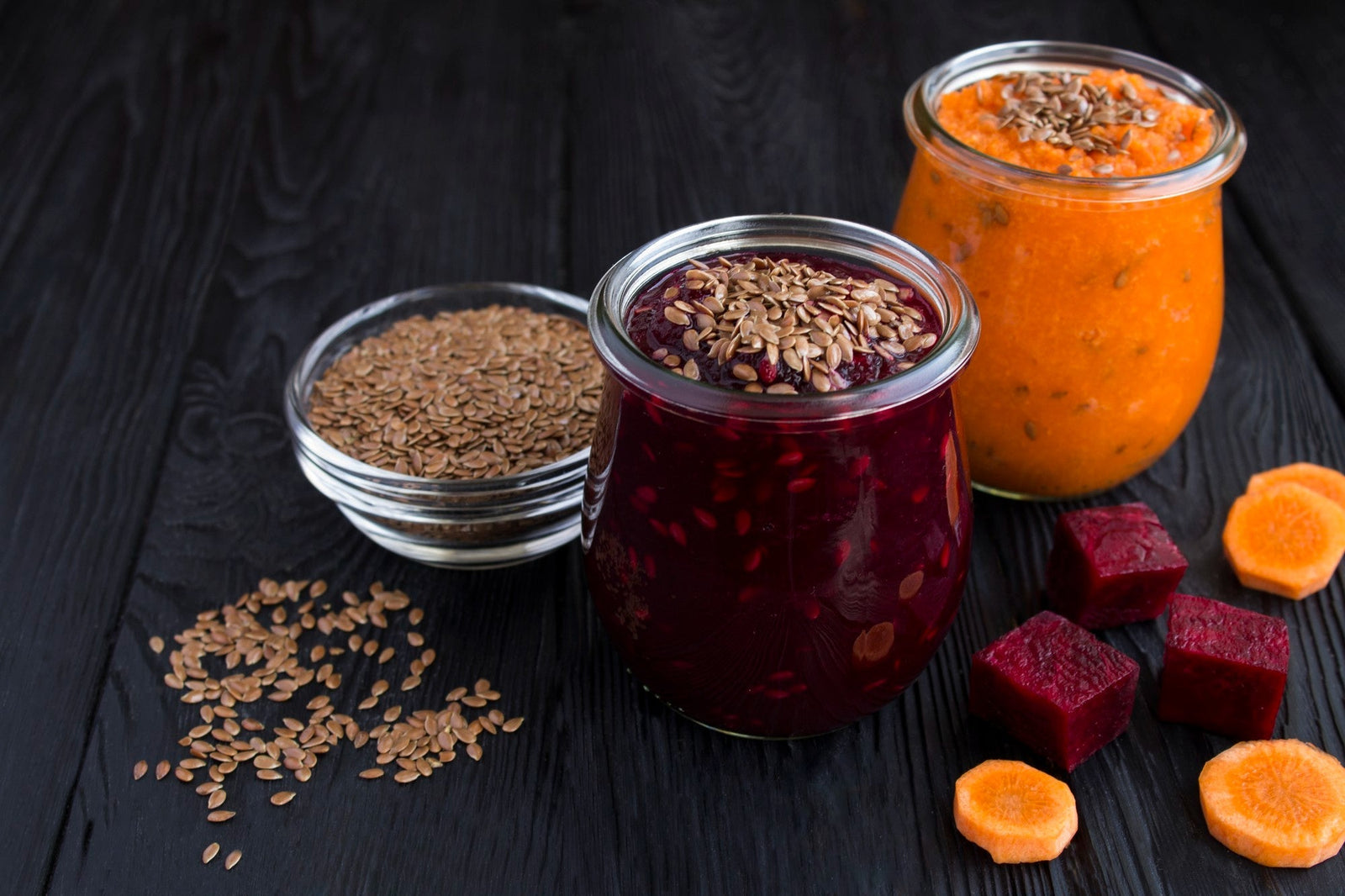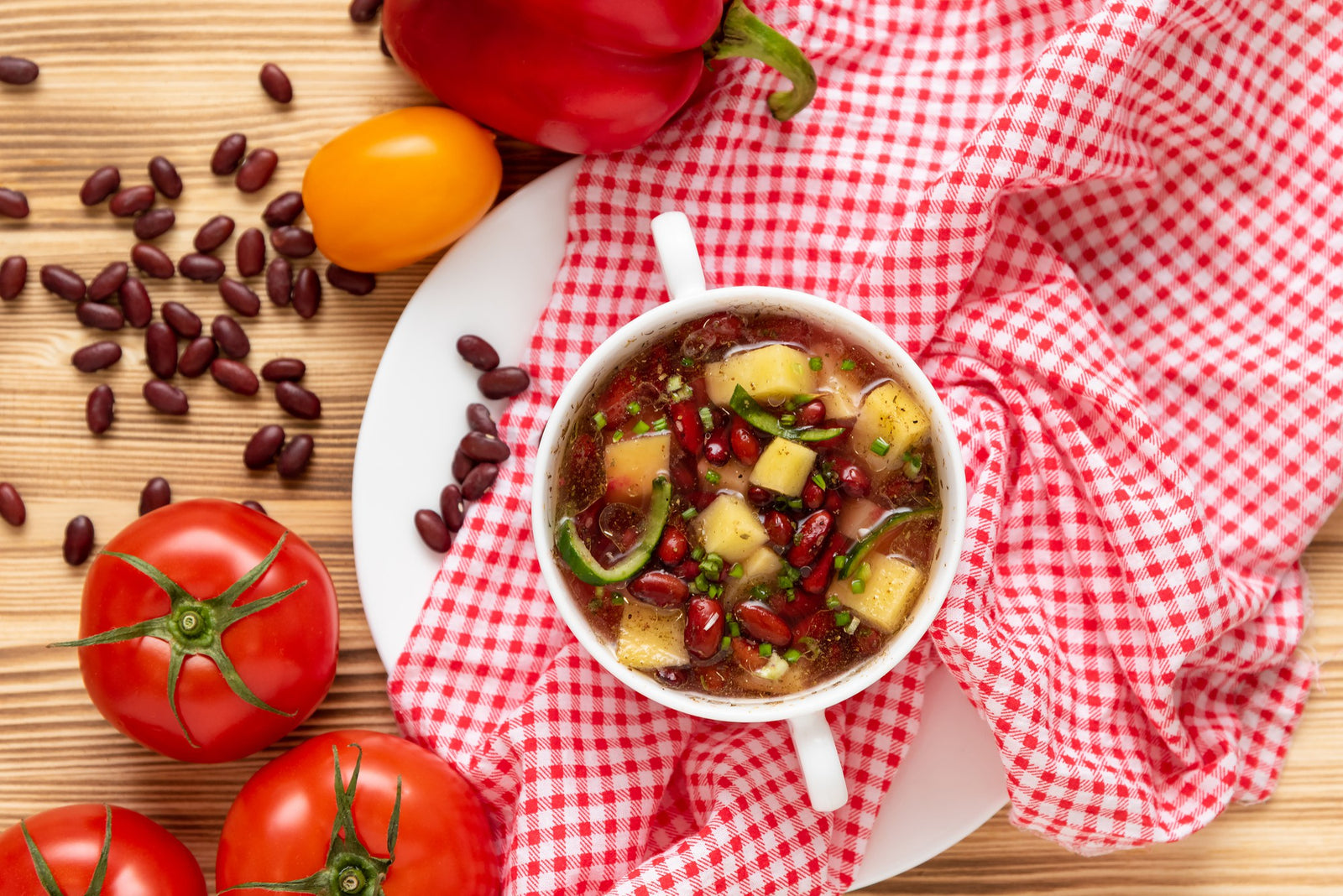
November 22, 2022 2 min read

Should you grind your flaxseeds or eat them whole?
Flaxseed is an incredibly nutrient-dense seed that is rich in dietary fiber and omega-3 fatty acids. But because of its hard outer shell, we can't absorb these nutrients when we eat them whole. Also, whole flaxseed is also a lot harder to digest. The seeds' hard shiny coating is what makes them difficult to digest. To make sure you are getting all of the great nutrients and healthy fatty acids that flaxseed provides, you should grind your seeds before using them. Flaxseed meal is much easier to digest and is far more beneficial to your health.
In the grinding process, the shells of the flaxseed are broken down to allow for full absorption of the whole seed, which releases more nutrients.
So grinding your flaxseed will help your body be able to absorb and take in all the powerful benefits that flaxseed provides.
There are many ways to use flaxseed ground flaxseed, you can add it to your smoothie or protein shake, in oatmeal, or as a flax egg. Flax eggs are super nutritious egg substitutes that you can use for vegan baking!. Check out our recipe for Flax Eggs to learn how to make them with just 2 ingredients.

There is a common misconception that flaxseed meal loses nutrients after a week (from the point of being ground). But actually, it can last a lot longer than that if stored in an airtight container and kept in the refrigerator. Flaxseed meal will store in an airtight container placed in the fridge for about 3-4 months. So you can grind your flaxseed ahead of time and still get all the nutrients! And the grinding process takes almost no time at all. To grind your flaxseed, you can either use a coffee grinder or a regular grinder and blend until powdery and light.
❤ Try our USDA certified organic Flaxseed ❤
Recipes:
Thanks for reading this Be Still Farms Blog article. To sign up for more news/articles and/or recipes, click here. For more about us, click here. To shop our certified organic products, click here.
Please comment and share and we look forward to serving you in the future!
Comments will be approved before showing up.

January 27, 2025 3 min read
Flaxseed, the tiny yet powerful superfood, is packed with nutrients that can support weight loss. From curbing hunger to stabilizing blood sugar, this guide dives into the science of how flaxseed can help you shed those extra pounds.

December 11, 2024 3 min read
Discover three quick and easy soup recipes featuring organic small red beans. From a classic vegetable soup to a creamy potato blend, these wholesome recipes are perfect for chilly days and busy weeknights. Packed with flavor and nutrition, these soups will warm your heart and soul this winter!

December 06, 2024 3 min read
This vibrant and nutritious Green Lentil Salad combines tender lentils with grilled chicken, fresh vegetables, and a zesty lemon dressing. Packed with protein, fiber, and essential vitamins, it’s the perfect healthy meal for any time of day.
© 2026 Be Still Farms- Real, Fine Organics.
Privacy | Terms | Refund Policy | Organic Certification
